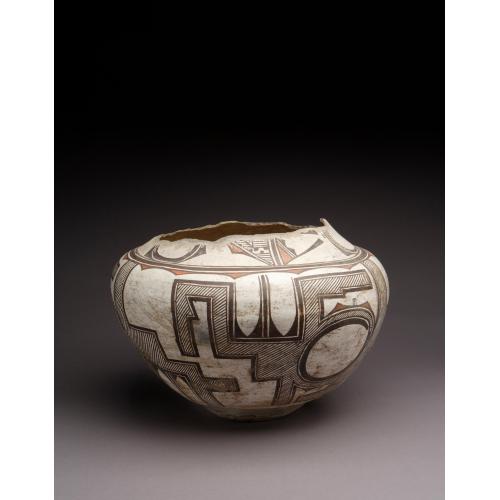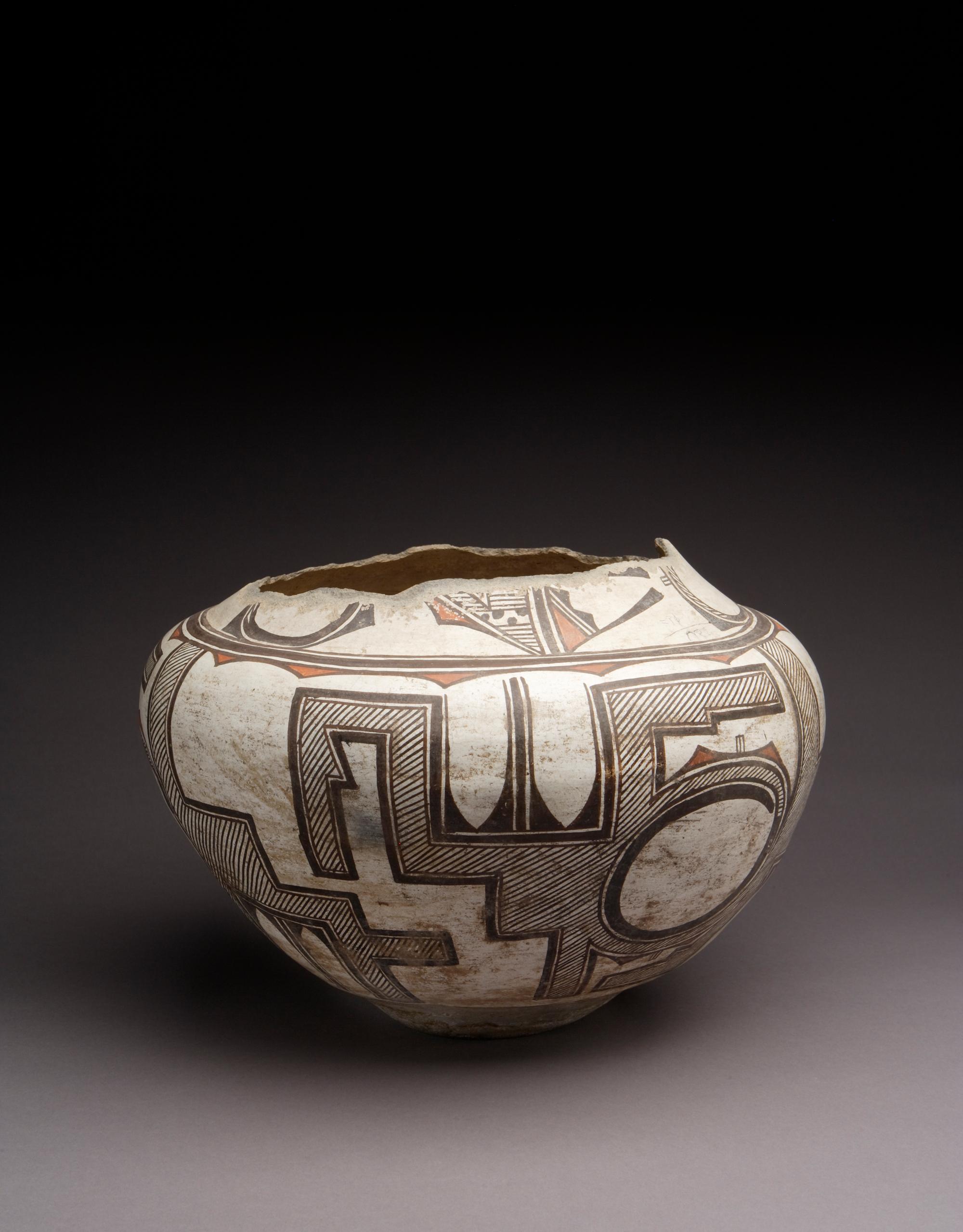
Photograph by Addison Doty. Copyright 2010 School for Advanced Research.
Water jar | K'yabokya de'ele
Date: c. 1890
Artist or Maker: Unknown
Dimensions:
Overall: 27.9 x 39.4 cm (11 x 15 1/2 in.)
Medium: clay | paints
Credit Line: Indian Arts Fund acquisition for the permanent collection.
Place Made:
Zuni Pueblo, McKinley County, New Mexico, Southwest, United States, North America
Object Number: IAF.1990
Not on view
Tribal Collection Review RemarksJim Enote and Octavius Seowtewa during collection review visit December 7 and 8, 2010 (Events Record “Collection Review: Zuni Tribe, Review 5”): The rim on this jar has eroded away. What is left of the neck shows that the designs were of bird heads with crests, tails, feathers, and rain hatching with dots that may represent hail, seeds, or planting holes. There is a triple border line (the middle line is thick) without a line break separating the neck and body designs. The body design has three bird designs. The designs contain bird heads (the heads each include an eye), crests, wings, tails, and rain hatching. There is a single line with a line break between the body and the base. The base is a solid dark brown with moderate wear and significant efflorescence. “$5.00” is written in pencil on the body of the jar.
The word for a water jar in Zuni is “k'yabokya,” which translates to “water container” in English. The intended use for these jars was to store and carry water, but they could also be used to store other items.
In Collection(s)
The Indian Arts Research Center, in collaboration with Native American community scholars, strives to present accurate collections records. Records may be updated as new information becomes available and is reviewed with the Native American community having cultural affinity to particular items. Please write to iarc@sarsf.org if you have questions or concerns related to the documentation.
